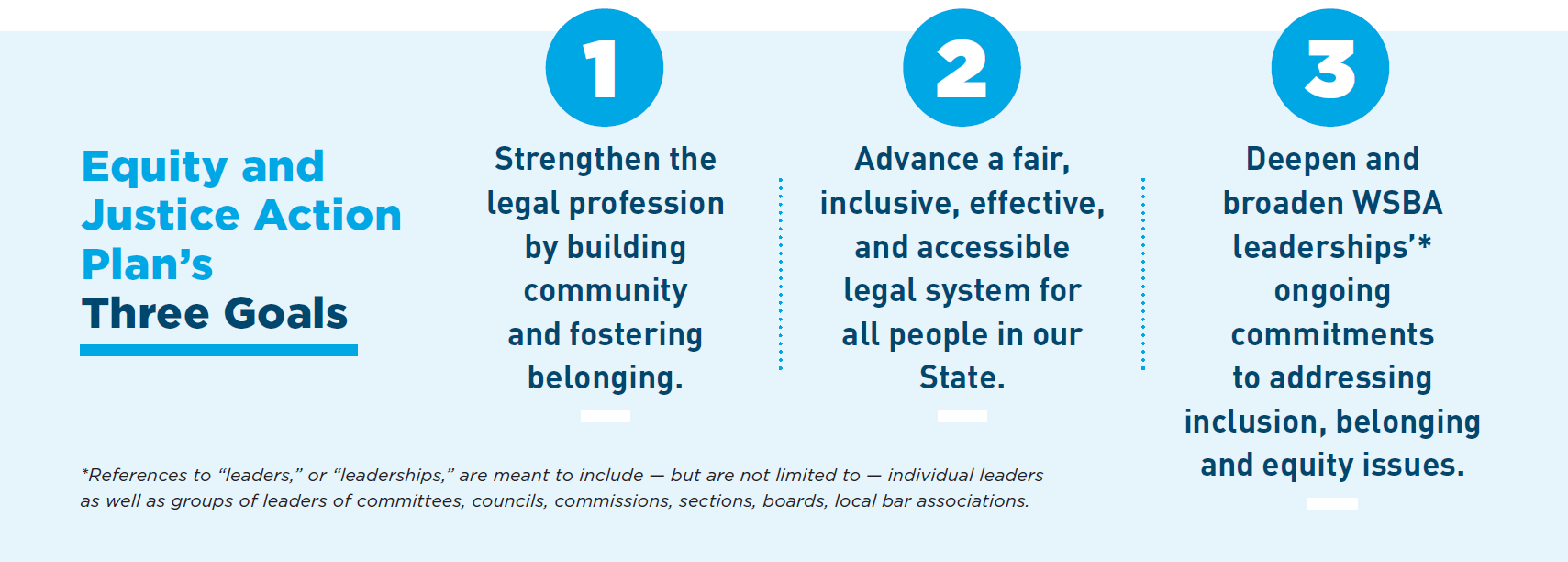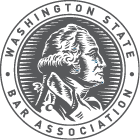Setting a New Course for Equity and Justice
A New Equity and Justice PlanThe Board of Governors adopted an Equity and Justice Plan on May 2, 2025, with much thanks to the WSBA Diversity, Equity, and Justice Council and the many people who contributed to the drafting. The plan is built on comprehensive quantitative and qualitative data reflecting members’ demographics and experiences. Stay tuned as the WSBA now begins implementation of the plan. |
The WSBA Equity and Justice Plan
The Washington State Bar Association recognizes the importance of having a legal profession that reflects the rich tapestry of the communities it serves. All Washingtonians are better off when our State's legal system and legal community are fair and welcoming to everyone. The Washington State Supreme Court, under General Rule 12.2(a)(6)1 has delegated the responsibility “to promote diversity and equality in the courts and the legal profession” to the Washington State Bar Association.
The Plan is informed by data collected in the 2024 Membership Demographic Study which tells us that our profession still has work to do to ensure that our legal community better reflects the public we serve. This Study shows continued marginalization of our underrepresented legal professionals who report that they are less likely to experience positive and satisfying workplace environments. Further, from addressing legal professional shortages in rural areas to increasing the number of legal professionals who understand clients varied lived experiences, legal services are more accessible when the legal profession reflects the communities we serve.
The Plan's goals are lawful and necessary to affirm WSBA's unwavering commitment to its mission — to serve the public and members, ensure the integrity of the profession, and champion justice.
Read the entire plan. As an overview, the Plan focuses on three goals:







